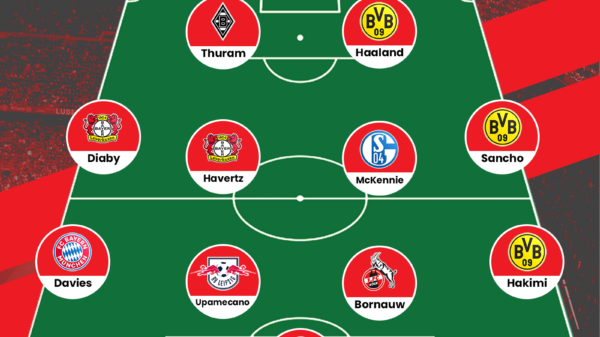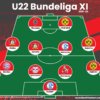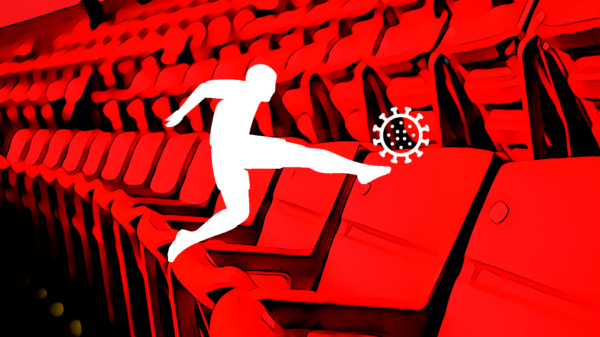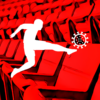Rishad Bharucha tactically analyses Borussia Dortmund’s emphatic win over Wolfsburg in the Bundesliga
VFL Wolfsburg failed to build on a solid 2-0 away win in their opening Bundesliga game against FC Augsburg, following it with scoreless draws against FC Köln and Hoffenheim. Going into a game against Borussia Dortmund without having conceded a goal so far is certainly a good record to possess, but one that they would very likely lose. One certain loss for Wolfsburg is that of (Lord) Nicklas Bendtner to Nottingham Forest at the start of the this season. It’s too early to say whether the big Dane will be missed or not.
Borussia Dortmund played, in retrospect, a blessing of a Champions League fixture away at Legia Warsaw after their 1-0 loss away at Leipzig. The floodgates opened for Dortmund as they ran out 6-0 winners. Thomas Tuchel’s side did indeed build on this result as they demolished Darmstadt 98 by the same score line. Their incisiveness on the counter attack, one can argue, has improved in less than two weeks, and Wolfsburg would have to be wary of the threat Dortmund pose.

Wolfsburg (4-2-3-1): 28. Casteels, 5. Bruma, 2. Wollscheid, 8. Vieirinha, 34. Rodriguez, 27. Arnold, 13. Gerhardt, 14. Kuba, 10. Draxler, 16. Bruno, 33. Gomez
Dortmund (4-1-4-1): 38. Burki, 25. Sokratis, 5. Bartra, 26. Piszczek, 29. Schmelzer, 33. Weigl, 10. Gotze, 13. Guerreiro, 22. Pulisic, 7. Dembele, 17. Aubameyang
Diagonal movement off the ball exposes central defensive cracks
A characteristic of both sides early on was the desire to seemingly throw caution to the wind and meet one quick, incisive offensive play with another. With the onus on Wolfsburg to attack at home, and Borussia Dortmund’s growing success on the counter attack, it might seem like an immovable object was about to meet an unstoppable force. Unfortunately, the Wolfsburg defence proved to be immovable in the sense that they just didn’t move.

Space created for Aubameyang through Guerreiro’s outward run
Raphael Guerreiro’s movement off the ball, which would trouble Wollscheid and Bruma all game, helped him latch on to a simple through pass, and he left Casteels wrong footed with a swiftly executed finish at his near post. What was significant of Guerreiro’s movement, was that he took up a starting position closer to the center and between the lines, but moved diagonally outside and in between a full back and a center back. The advantage of this sort of movement is that it maintains enough space for a center forward like Aubameyang to take on the center backs and give them another problem.
The failure of the high line on the transition
Dortmund have quick players who press often, and playing a high line against them certainly backfired for Wolfsburg. More static defending from a throw-in caused the high line to chase back as the ball was flicked on to Aubameyang. Dortmund’s talisman only needed one swift change of direction to set himself up for a curling shot to the far corner of the net. While a throw-in is not exactly the typical transition in which you concede possession and the opponent reacts quickly, the turnover is enough to require defenders to switch their point of focus. The Wolfsberg defence were like sheep trying to chase a rabbit once Aubameyang was through and the result was predictable.

Aubameyang effectively needs to beat one defender thanks to the high line
For Dortmund’s early goals and their ability to withstand Wolfsburg’s pressure thereafter, their own line, though not as high as Wolfsberg’s, as well as the pairing of Bartra and Sokratis were certainly weaknesses that Wolfsburg did not fully exploit. The two center backs, like their Wolfsburg counterparts, were vulnerable to being split by a pass between and behind them, especially on the counter. They seemed to have a good understanding for most of the game, but like Wollscheid and Bruma, failed to maintain a reasonable distance between them while dropping towards their goal.
Bartra was replaced by Matthias Ginter after twelve minutes, but this was clearly a problem that would need to be solved with the back four and midfield on the training ground, with Didavi afforded the space and time behind them to pull a goal back for Wolfsburg in the second half. Both sides lacked a sufficiently compact shape off the ball in the midfield to really squeeze out the midfield, especially considering both teams tended to pass vertically towards the center more often than diagonally to the wings.
Incisive one and two touch passing buildup
Both sides demonstrated effective one and two touch passing that was directed vertically forward more than horizontally sideways, leading to a quick movement of the ball across the thirds of the field for each team. Wolfsburg could not be faulted for their effort early on, and arguably even had better opportunities on set pieces to pull a goal back.
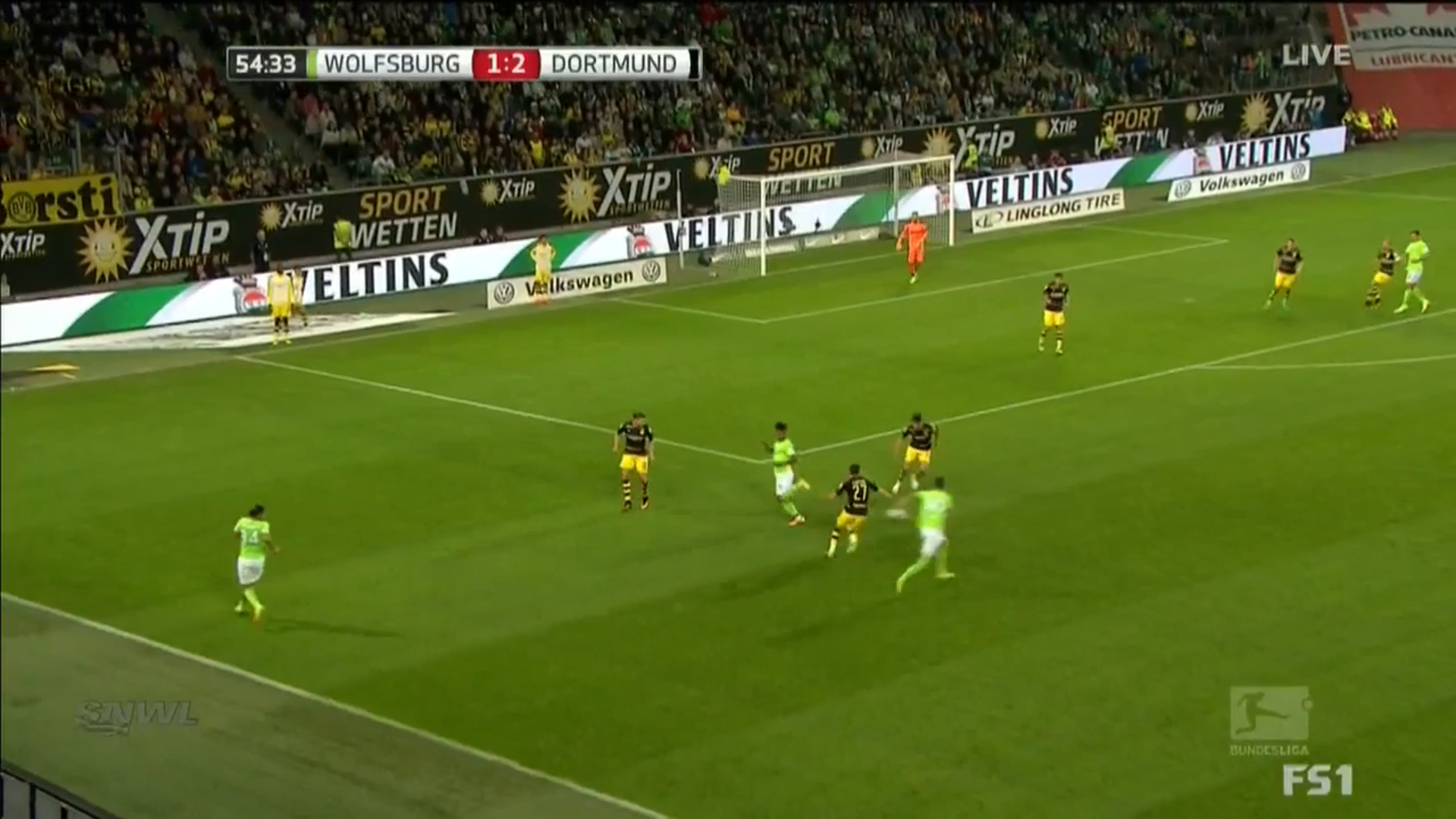
Draxler combines with Didavi while drifting infield towards the goal
Wolfsberg’s Julian Draxler showed his dribbling skills in and around the box when it mattered, but was equally adept at combining quickly with Vierinha and Rodriguez near either touchline, creating space for Mario Gomez in the box. To the Dortmund center-backs’ credit, they did an excellent job of marshaling Gomez’ threat throughout the game, albeit with some occasional last ditch defending on the line from goalkeeper Roman Burki.
One and two touch passing is an important characteristic of some of the best possession-based teams. Compared to Pep Guardiola’s Barcelona, however, Dortmund rely less on the quantity of passes and movement of the ball into wider spaces to toy with the opposition. They tend to dwell slightly longer on the ball with the purpose of drawing the nearest oppositions players forward and create space for a teammate directly behind. One doesn’t have to dwell too long on the ball, only long enough to get the nearest opposition player(s) on the move and away from the space or man they were covering.

Ginter dribbles out into space before sliding a pass to Dembélé
While this approach, in theory, reduces the passing options available and can be neutralized by an aggressive, counter-pressing team like Leipzig, most teams aren’t set up to neutralize this threat. It is also important to have the right players for this kind of approach – players who can make decisions under pressure, can adapt quickly to the chemistry of a team, and most importantly, are technically quick (not just physically) with and without the ball.
Effective but not so “heavy metal” transitions
While Jürgen Klopp’s “heavy metal” football style has its admirers and effect, Tuchel brings more measure and balance through efficient use of possession. This more efficient use of possession also translates exceptionally well on the counter attack. An excellent example of this is Dortmund’s third goal. While they did push to get the ball out quickly, even when Götze had the ball, things looked like they were under control.

Götze plays to Guerreiro, while Castro is on the move
But as soon Guerreiro became available between the Wolfsburg lines, Götze passed to the Portugese man, who slid Castro behind the defence, only for him to square to Dembélé to slot home. This was not a a classic sprint with half-a-dozen runners on either flank, in the manner Real Madrid have spectacularly scored through in the past, but this was effective nonetheless.
The difference in quality of buildup between the two sides was quite clear, especially as the game progressed. Wolfsburg had a spell of possession and scoring opportunities at the start of the second half through which they pulled a goal back, but their hopes were extinguished with Dortmund’s third goal, which put the away side firmly back in the driver’s seat.
Direct wingplay to stretch vertically more than horizontally
One would normally associate playing the ball to wide areas to provide “width” to a team, and stretch the opposition horizontally. While this is largely the case more often than not, the horizontal strech is most effective when the directness on the flanks leads to a supply of crosses into the box. However, considering how both teams prefer to play more vertically, the ball would be moved out wide before being supplied to the runners between the lines, who would then link up with the center forwards.

Dembélé ready to move diagonally inside with Guerreiro in possession
As a result, players like Draxler and Dembélé did not have to “hug the touchline”, but simply take on their man along a trajectory that is slightly further away from the touchline, in order to affect the counter attack or build up in the attacking third. There were no long switches of play from one flank to another or diagonal passes out wide from central midfield. A reliance on this kind of buildup probably even contributed to the previously stated lack of compact shape off the ball, as it gives defenders less time to scan the spaces and regroup and provides them with the additional problem of tracking the runners behind them.
Conclusion
This game suggested that Wolfsburg have plenty to do this season to challenge for higher honours and their current 10th place league position is probably a fair reflection of where they could end up if the teams above them keep improving. Dortmund on the other hand, could potentially look forward to the kind of high-scoring results and entertaining performances that saw them pip Bayern Munich to the Bundesliga in 2011/12.
Read all our Tactical Analyses here.
- Tactical Analysis: Schalke 0-1 Leverkusen | Sending off ruins Schalke plans - December 19, 2016
- Tactical Analysis: Dortmund 4-1 Mönchengladbach |Dortmund’s patience and clinical finishing - December 8, 2016
- Tactical Analysis: Wolfsburg 1-5 Borussia Dortmund | Tuchel’s men win emphatically - September 24, 2016





















































